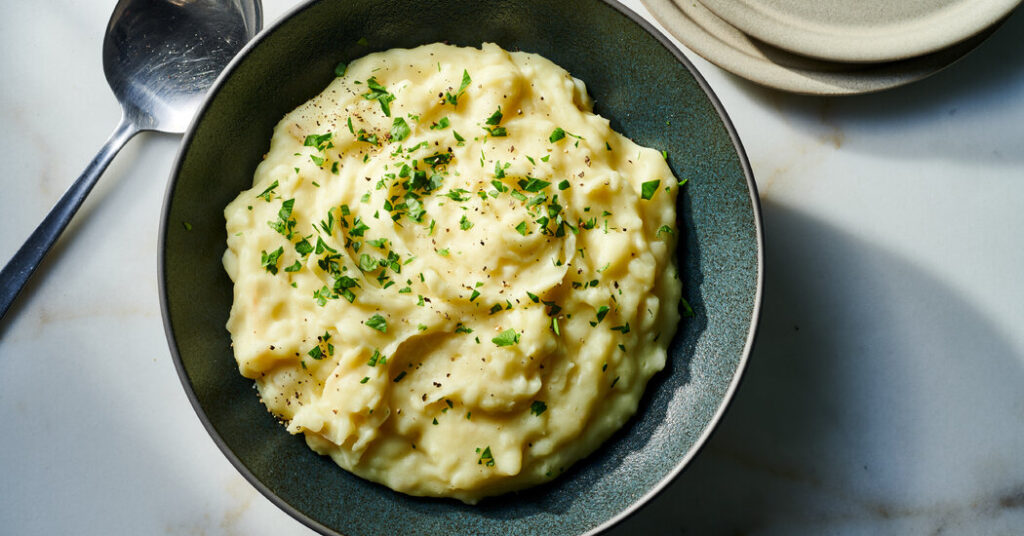
On Christmas Day in Macaé, Rio de Janeiro, Brazil, the kitchen was the gathering place for Thailine Kolb, her cousins, her mother and her aunts. While the children ran around, the women, dressed in matching aprons, prepared a holiday dinner. Mrs. Kolb remembers sprinkling salt on dishes and mashing pounds of yuca for one of her favorite holiday dishes: purê de mandioca, or yuca purée.
But now, about a decade since she moved to the United States, this purée has a deeper meaning on her Thanksgiving table, representing her culture amid the dishes of her husband’s family. Not only is it an easy substitute for mashed potatoes, it’s a natural way for her to incorporate her country’s flavors, like many other immigrants do, on the holiday.
“I like the taste better,” said Mrs. Kolb, 33, of New Haven, Conn. When she started making the dish five years ago for Thanksgiving with her then-boyfriend’s family, she would call her mother, Liomar dos Santos Paula Araujo, in Brazil, who taught her how to boil, mash and make the yuca rich with butter and milk over the phone.
Yuca, the root of the cassava plant, can be found in many of the country’s dishes. Once its tough outer bark is peeled away, the starchy white flesh within can be boiled, mashed, fried like a French fry or even used as a flour.
The crop likely originated in Brazil and was a staple for Indigenous people living in the Amazon Basin and the foothills of the Andes Mountains, said Darna L. Dufour, a retired anthropology professor at the University of Colorado, Boulder.
In the 16th century, Indigenous Brazilians taught the Portuguese how to prepare the root safely, said Seth Garfield, a Brazilian history professor at the University of Texas at Austin. (Its bark contains cyanide and must be removed before cooking.)
“It’s very much a part of Brazilian national identity as a food,” Dr. Garfield said.
The food blogger Aline Shaw has incorporated dishes that were “emotionally important for everyone participating” in her American Thanksgivings with family and friends. For her, that dish is purê de mandioca, something she also learned to make with her mother in Brazil. She remembered watching her mother peel and cut the yuca, unintimidated by its preparation. She’d break open pieces of yuca with her hands and peel its outer bark with only a small paring knife.
For Ms. Shaw, 38, who lives in Dallas, that work was a labor of love. And as a culinary school graduate accustomed to cooking other people’s cuisines, she loves to share her culture at the table. She even wrote about her mother’s recipe around Thanksgiving on her blog, Brazilian Kitchen Abroad, so that people could try something new.
“I’m always eating other people’s foods, so I always make it a point to make something Brazilian,” she said, adding that Thanksgiving is “a great opportunity for people to venture out of the norm, especially in a country with so many cultures living together.”
You may also like
-
Introduction to Apical Consulting Inc.
-
Focus on a Tiny Autonomous Province in Italy Experiencing Continuous Economic Growth: Interview with Trento Provincial Councillor Achille Spinelli on the Prospects and Challenges of Zygmunt Bauman’s Liquid Society
-
A Cozy Risotto Party for the New Year
-
The Most Exciting Part of a Restaurant Is … the Bathroom?
-
What Is Panettone and Who Controls It? The Gold Rush Is On

